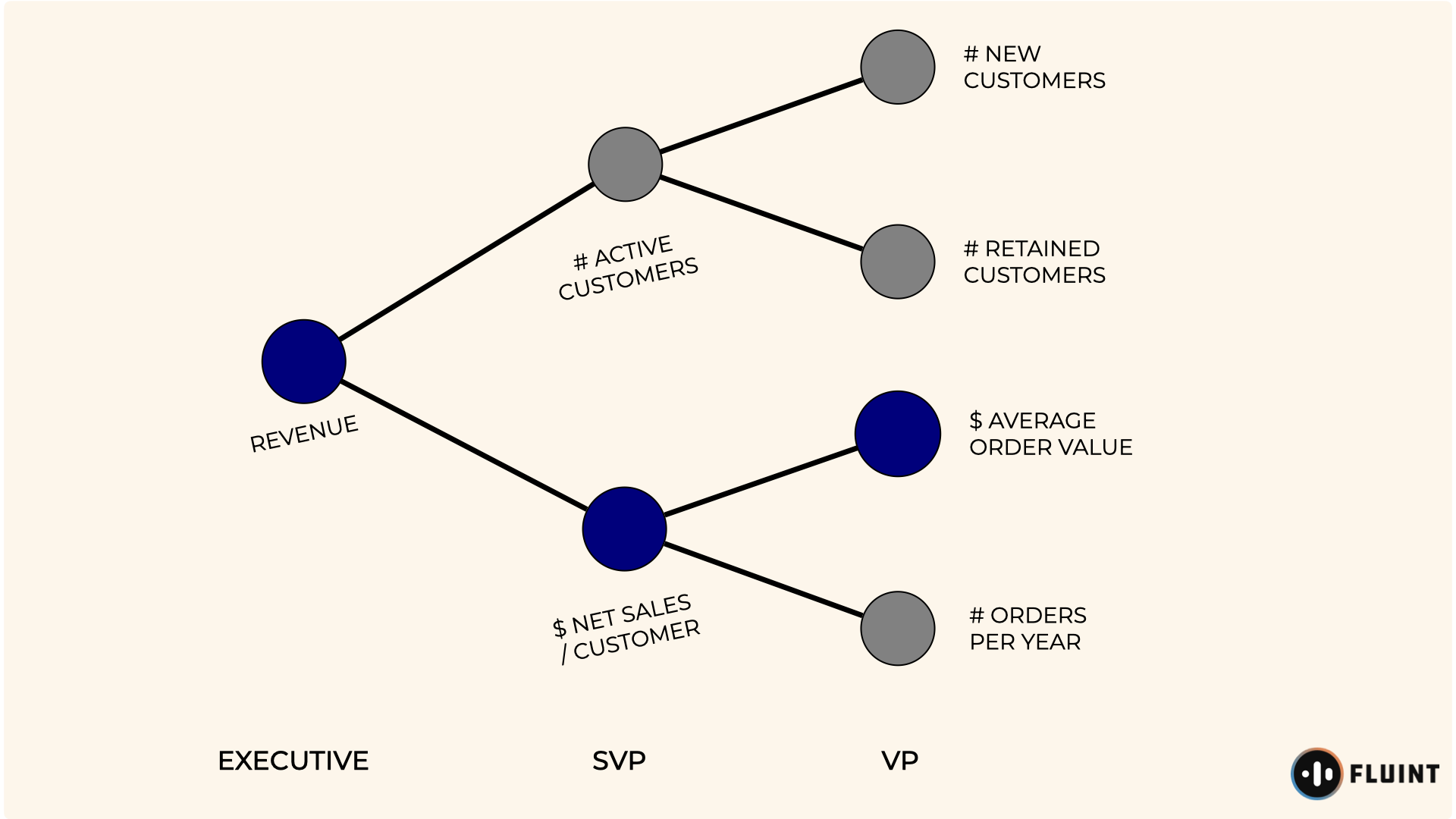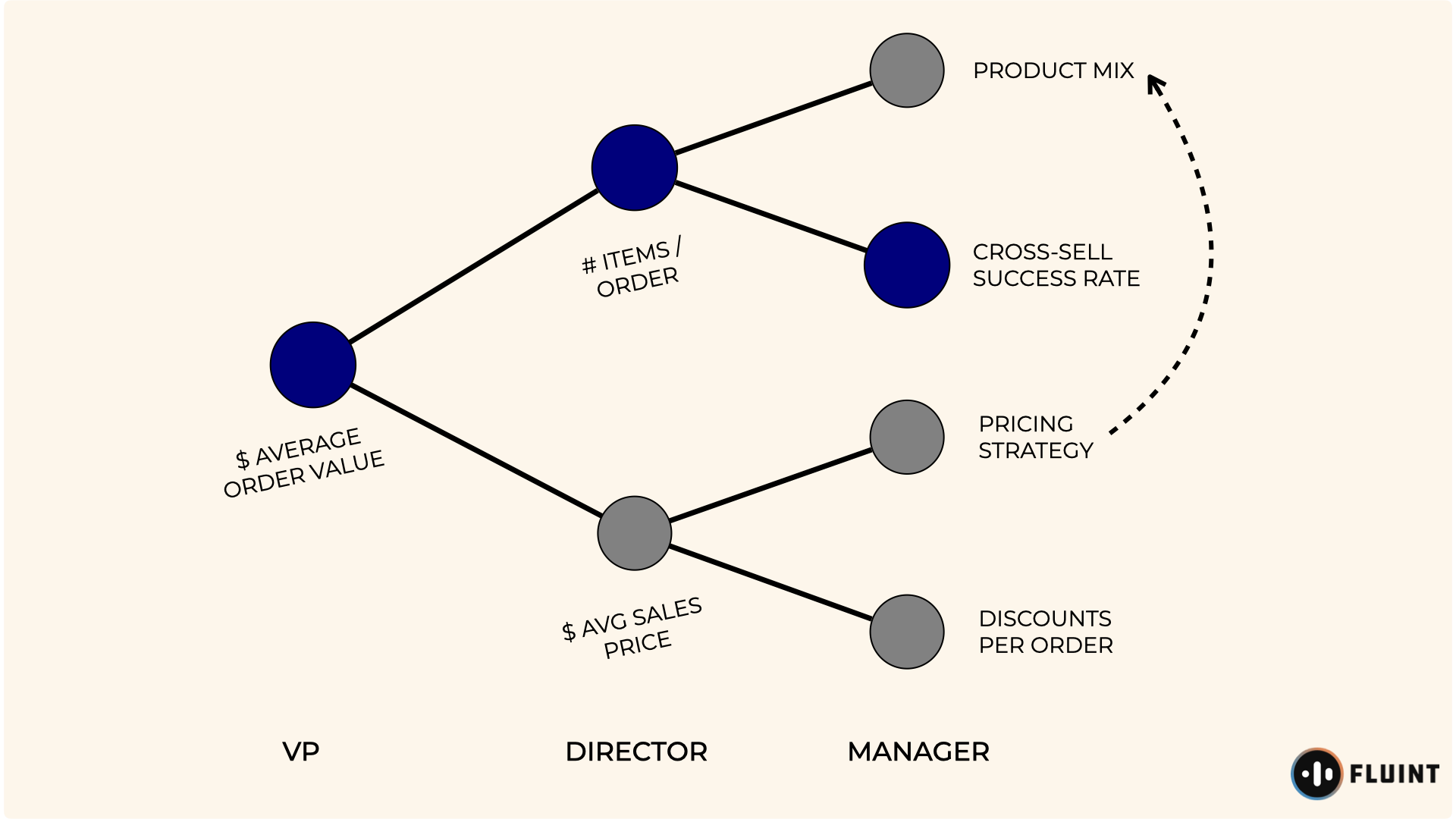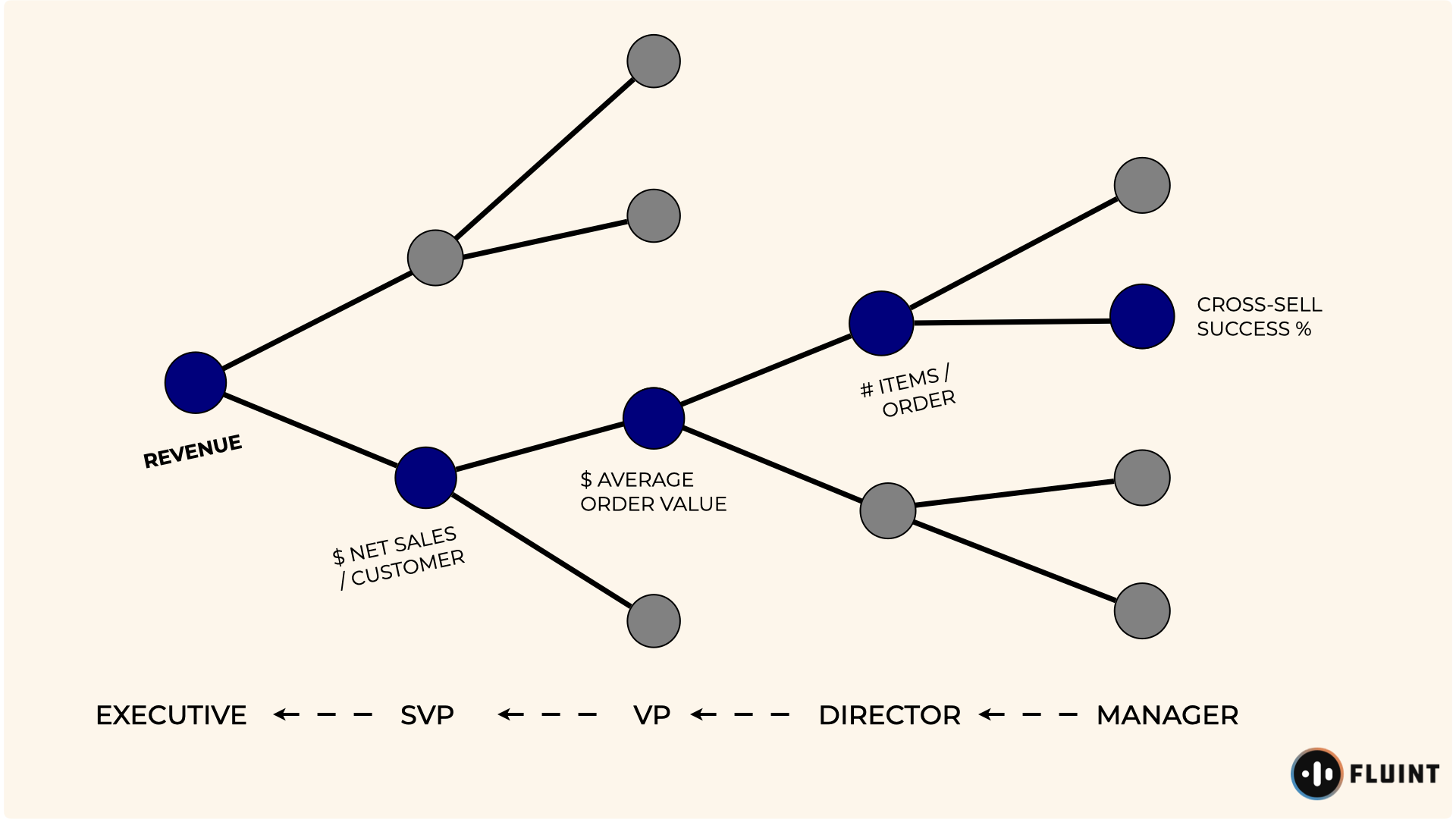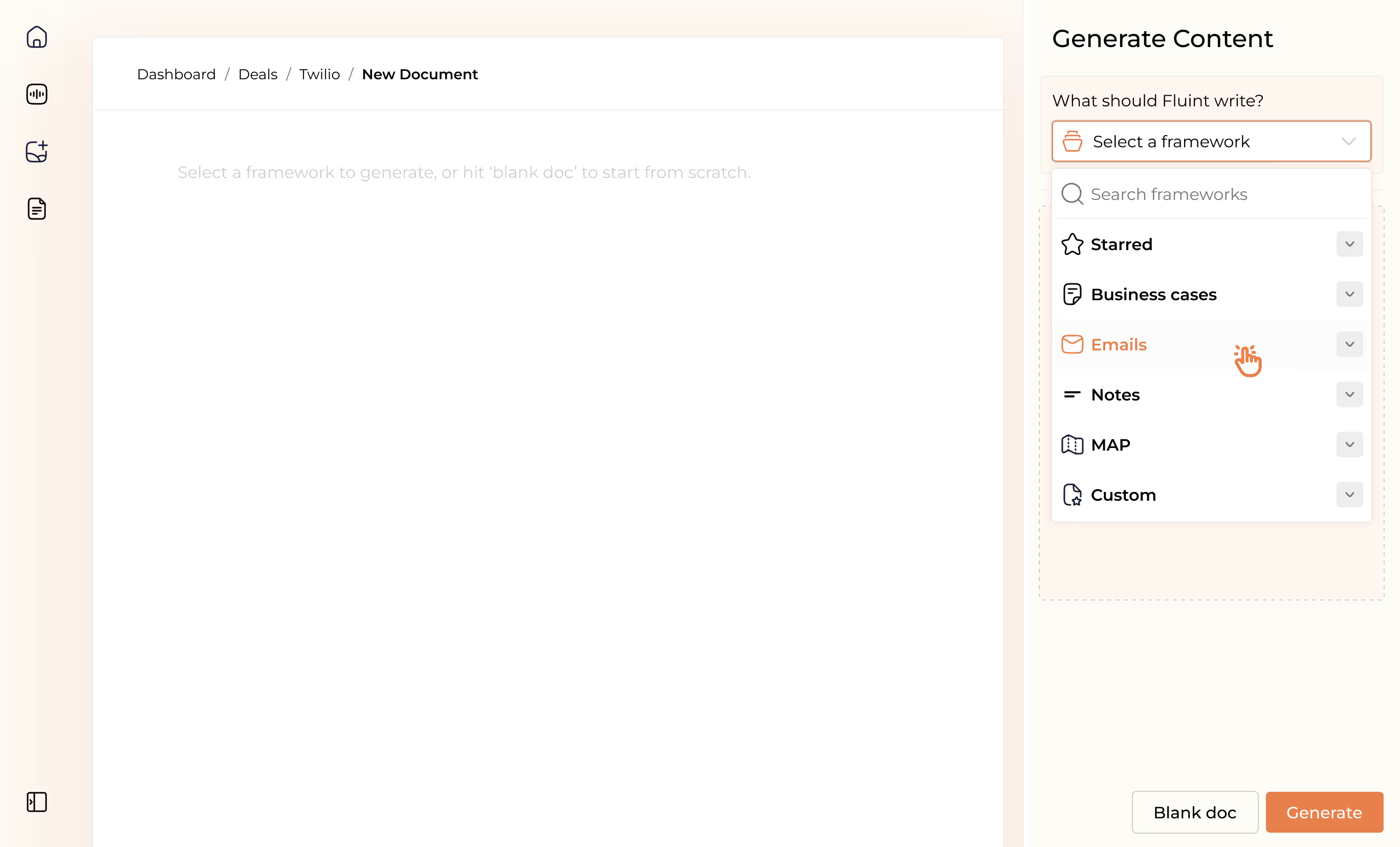How to Craft a Credible, Exec-Level Point of View
When sales leaders say “build a POV” (point of view), here’s what they mean — and how to do it:

You’re looking at a “driver graph” here.
Which is a concept from the FP&A world, and it models out all the cause-and-effect relationships behind a company’s core metrics.
Understanding how to create this for your target accounts — especially if you’re not verticalized, and cover a few different industries — is table stakes.
To start crafting a point of view, start on the left side:
(1) What’s the highest-level metric your end buyer (the “EB”) owns?
(2) When that exec stands up at their next board meeting, and they talk about what’s been changing or trending since last year/quarter — and where they’re headed in the next 2-3+ years — which “link” in the driver chain are they focused on?
For example, if revenue’s down inside an e-commerce business, is that because:
- of customers in their base shrank?
- same #, but they’re spending less?
(3) Then, if that exec talks to their SVP about why net sales / customer is down, and that SVP talks to their VP about declining average order values (AOV), what’s trending there?

(4) Now, let’s say that VP goes and talks to their Director, and discovers that cart volume (# items / order) is down year-over-year.
How are they gonna fix it?
That’s where your point of view comes in:
It’s the intersection of all the above + what you can do differently/uniquely as the answer:
To “think big & act small” as my friend Brandon Fluharty says:
- Big impact at a high level
- With a specific, credible link to their operating model

So, when you create an overall flow from…
- Left side: what metric you’d like to influence
- Right side: how you plan to impact it
…then, you’ve built a point of view. Which is just sales speak for saying you:
- Crafted a message that resonates at an exec level
- With a set of “layered,” high-priority problem statements
- With a specific (and therefore believable) approach to fix it
- And a clear way to measure the outcomes + early indicators
All while threading together the right contacts at every level. Which you can tie into your overall exec summary, to keep deals moving forward — while guiding discovery.
Just like in this video breakdown:
Why stop now?
You’re on a roll. Keep reading related write-up’s:
Draft with one click, go from DIY, to done-with-you AI
Get an executive-ready business case in seconds, built with your buyer's words and our AI.

Meet the sellers simplifying complex deals
Loved by top performers from 500+ companies with over $250M in closed-won revenue, across 19,900 deals managed with Fluint

Now getting more call transcripts into the tool so I can do more of that 1-click goodness.



The buying team literally skipped entire steps in the decision process after seeing our champion lay out the value for them.


Which is what Fluint lets me do: enable my champions, by making it easy for them to sell what matters to them and impacts their role.









.png)